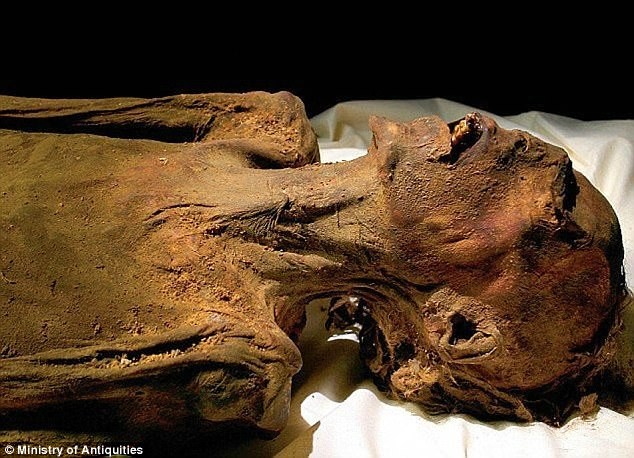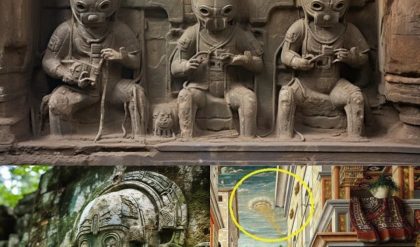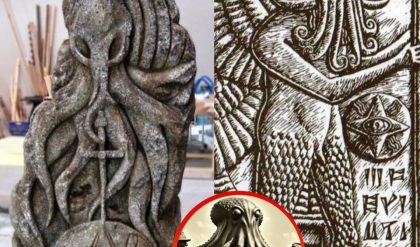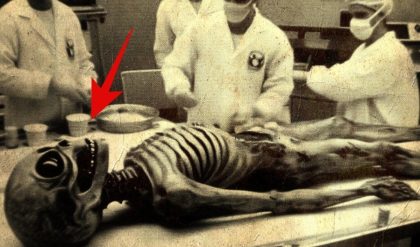Her unsettling, seemingly agonised facial expression gave this ancient Egyptian mummy the nickname “screaming woman.” A new analysis claims that this shocking pose is actually related to the woman’s cause of death, an apparent heart attack. But other scientists are spectical, saying the open-mouthed scream likely only appeared well after the woman’s demise.
Ads by MaxValue.Media
With her head tilted back, mouth wide open, and empty eyes staring into the abyss, it’s among the spookiest mummies you’re ever going to see.

A recent analysis of this 3,000-year-old mummy, performed by Egyptian archaeologist Zahi Hawass and Cairo University radiologist Sahar Saleem, concludes that the woman, a pharaonic princess, died suddenly from a massive heart attack, as evidenced by signs of severe atherosclerosis of the coronary arteries and, more controversially, her final death pose.
Hawass told the Egyptian publication Ahram Online that the embalming process preserved the woman’s position at the moment of death.
We’re not buying it, and neither are the experts we spoke to for this story. But let’s do a quick review of this gruesome specimen before we get into the controversy.

The mummy was found in 1881 at the Royal Cachette of Deir El-Bahari in Luxor, Egypt. Priests from the 21st and 22nd dynasties of Egypt concealed the remains of dignitaries at this location to protect them from grave robbers. An inscription on the mummy’s linen described the woman as the “royal daughter, the royal sister of Meret Amon,” which isn’t very helpful, given that many pharaonic princesses shared the same name. The woman’s actual identity remains a mystery, so while she is colloquially called “the mummy of the screaming woman,” she is known to archaeologists as “Unknown Woman A.”
Interestingly, the Royal Cachette yielded another “screaming” mummy — a male identified as Pentawer, the son of King Ramses III. Pentawer was involved in the Harem Conspiracy, a plot to kill his father, but he was caught and forced to kill himself by hanging. Unlike other mummies uncovered at this site, however, Pentawer was not embalmed and was instead wrapped in sheep’s skin as punishment for his crime.

The mummy suspected to be Pentawer. (Image: Zahi Hawass)
The female screaming mummy, on the other hand, was wrapped in white linen and “carefully mummified,” according to Ahram Online. To determine cause of death, Hawass and Saleem performed CT scans on the mummy, finding evidence of severe atherosclerosis. The woman, who died in her 60s, had plaque buildup in the walls of her arteries, including arteries in her neck, abdomen, pelvis, and lower limbs, according to the researchers.
This is not an entirely surprising result. As a Lancet study from 2013 showed, 34% of mummies from this time period, both in Egypt and elsewhere, suffered from cardiovascular disease.
As for the woman dying suddenly of a massive heart attack, that’s actually less certain — especially given the claim, as stated in Ahram Online, that “the ancient Egyptian embalming process had preserved the posture of the princess at the moment of death.” Here’s the claim, as described in a post published to Hawass’s website:
It seems that the “Screaming Woman” died suddenly while on her current body posture with flexed crossed legs. Consequent to death, her head was tilted to the right side and her jaw dropped. We assume that the dead body of “The Screaming Woman” might not have been discovered until hours later, enough to develop death spasm. Stiffening of muscles and joints following death is termed death spasm (rigour mortis); it starts few minutes to several hours postmortem. The contracted muscles become rigid without being able to relax until the body starts to decompose.
We assume that the embalmers likely mummified the contracted body of the “Screaming Woman” before it decomposed or relaxed. The embalmers were thus unable to secure the mouth closed or put the contracted body in the state of lying down, as was usual with the other mummies, thus preserving her facial expression and posture at the time of death. The CT scan showed that the embalmers did not extract the mummy’s brain; the desiccated brain is seen in the skull cavity shifted towards the right because of the tilted head postmortem.

Hmmmmm.
This struck me as a very strange conclusion, given that rigour mortis dissipates after two or three days and that the mummification process can take upwards of 70 days. I contacted Andrew Wade, a mummy researcher associated with the IMPACT Radiological Mummy Database Project at Western University. “Your suspicion is well-justified,” Wade said, noting that the mummification process for a royal person would have gone on much longer than the effects of rigour mortis. He wrote in an email to Gizmodo:
[T]he body would have remained malleable for days and even weeks after death, as was found in the experimental mummification of MUMAB by Ronn Wade and Bob Brier. It is far more likely that the wrappings around the jaw were simply not tight enough to hold the mouth closed, as it does tend to fall into an open position if left to its own devices. This may also have combined with shrinking of the soft tissue as it dried out in the natron salts, leaving some additional room for the jaw to slump open.
This mouth position is actually fairly common. Mark Rose, editor for Archaeology, had an excellent piece in 2009 about this exact issue (with mention of Unknown Woman A) that included some excellent commentary from the late renowned mummy researcher Arthur Aufderheide.
So there you have it — some perfectly reasonable explanations for an allegedly mysterious mummy that’s not even special or enigmatic to begin with.
I also reached out to Randall Thompson, a cardiologist from St. Luke’s Mid America Heart Institute, to get his opinion on the researchers’ claim that the woman died of a heart attack.
“Our group has CT scanned over 300 mummies now, and it is almost never possible to determine the exact cause of death from the CT scan,” Thompson told Gizmodo.
Thompson pointed to two exceptions: A Mongolian mummy with a noose around his neck and an Egyptian mummy with an arrow head lodged in his chest cavity and what appears to be a significant amount of mummified blood.
“The medical doctors on our team observed with some amusement that museum curators and anthropologists sometimes spin a whole story about a mummy from a small piece of objective data — and there is no one around to contradict them,” he said.
As for the alleged death pose, Thompson said an “open mouth in a mummy is almost certainly a post-mortem change, and not an expression of emotion frozen at the time of death.”
Gizmodo reached out to the Egyptian researchers for comment, but we have yet to hear back from them. We’ll update this story should we receive a response. For now, it would be wise to take this latest research with a hefty grain of natron salt.





